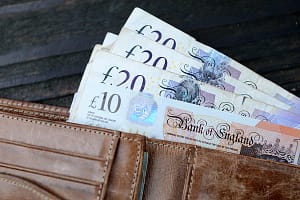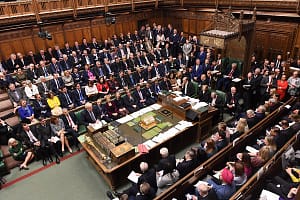Over 1m people have enrolled into the government’s furlough scheme, while millions more are facing either unemployment, pay cuts or severe job insecurity.
One in 10 (11%) of over 55s with a pension have either already accessed or plan to access their retirement pot earlier than anticipated as a result of COVID-19.
Five things people need to consider when accessing their pension during COVID-19
Tom Selby, senior analyst at AJ Bell said, “The COVID-19 shutdown is hitting the finances of millions of people. In such difficult times, it is inevitable many over 55s with turn to their retirement pot to plug an income shortfall. Our research suggests in one 10 have either already done this or plan to do so – and we are only five weeks into lockdown.
“If you are over 55 and considering accessing taxable income from your pension earlier than planned you need to understand the implications of that decision.
“Firstly, you will trigger the money purchase annual allowance (MPAA), reducing the amount most people can save in a pension each year from £40,000 to just £4,000.
“Secondly, if you’re planning to take a regular income early you will need to think about the sustainability of your withdrawal plan. As an example, someone taking a 5% inflation-adjusted income from their fund who experiences a 20% drop in the value of their fund in the first year of drawdown – as many have recently – could see their money run out after 18 years.
“Given many people can expect to live well into their 90s, such a withdrawal plan would risk being unsustainable even for someone who started in their mid-to-late 60s, let alone before your 60th birthday.”
Once you ‘crystallise’ your pension you lose tax-free cash on future growth
“Hundreds of thousands of savers access their pension for the first time every year, with the majority of those entering drawdown citing getting their 25% tax-free cash as the main reason for doing so**.
“In order to access your tax-free cash you need to ‘crystallise’ your pension – this just means choosing a retirement income route, such as drawdown or buying an annuity. If you choose drawdown then once you have taken 25% of your fund as tax-free cash, the remaining drawdown fund continues to benefit from any investment growth.
“However, if you crystallise your entire fund you have taken all the tax-free cash you can from that fund – you can’t go back and take more if the drawdown fund grows.
“With the FTSE100 down over 20% since the start of the year, millions of people with pensions will have seen the value of their funds plummet. Anyone choosing to access their tax-free cash today risks ‘selling on the dip’.
“For someone with a £100,000 fund who saw this drop by 20% to £80,000 during the current crisis, this would mean a fall of £5,000 in their maximum available tax-free cash (from £25,000 to £20,000).”
‘Partial crystallisation’ is one option for those wanting tax-free cash today
“For those who have exhausted other ways to raise money and need to access some tax-free cash earlier than planned as a result of Covid-19, ‘partial crystallisation’ is one way of mitigating the impact on your overall tax-free cash entitlement.
“If someone with a £100,000 fund wanted to access just £10,000 tax-free cash, they could choose to crystallise £40,000 of their fund rather than the entire amount, giving them the £10,000 tax-free cash they need.
“The remaining £30,000 drawdown fund and the £60,000 ‘uncrystallised’ part of the fund – including the remaining tax-free cash entitlement – would have the opportunity to grow over time.
“Another option is to take an ad-hoc lump sum from your fund, with 25% of each withdrawal tax-free. However, the rest of your withdrawal will be taxed in the same way as income and you will automatically trigger the money purchase annual allowance (MPAA), reducing the amount most people can save in a pension each year from £40,000 to £4,000.”
You can keep paying into your pension and build up a fresh tax-free cash entitlement
“Although there is no going back once you have crystallised your pension, you can continue to make contributions and build up fresh tax-free cash entitlement on these contributions.
“Furthermore, provided you haven’t taken taxable income from your drawdown fund and triggered the MPAA, your annual allowance in most cases will still be £40,000.
“If someone with a £100,000 fund accessed all their available tax-free cash at age 55 but then continued saving £3,000 a year into a pension, their new contributions could deliver a fund worth £47,000 by age 66, including a tax-free cash entitlement of £11,750.
“If they upped their annual contribution to £5,000, the new fund could be worth £78,000, with £19,500 available tax-free.”
Don’t forget about the investments in your pension fund!
“Although accessing your tax-free cash won’t necessarily mean a change in your underlying investments – particularly for those in their 50s who might not be planning to access the rest of their fund for a decade or more – it is worth using this as an opportunity to review your retirement plans, ultimate goals and how your investments can help you achieve these.
“For example, someone planning to take a regular income from their drawdown plan after accessing their tax-free cash will likely choose a different asset allocation to someone who doesn’t plan to touch the remaining money for another 15 years. If you are planning to take a regular taxable income over and above your tax-free cash, you’ll also need to consider both the MPAA on your ability to save in the future and the sustainability of your withdrawal plan.
“While many will understandably be spooked at the idea of investing at the moment, it is worth remembering that short-term volatility has historically been the price you pay to enjoy longer-term growth.
“Investors also need to be aware of and comfortable with the risks they are taking. Although investments can go down in value as well as up (as we have seen in dramatic circumstances recently), the value of any investments left in cash will be eaten away by inflation over time.”






Leave a Comment